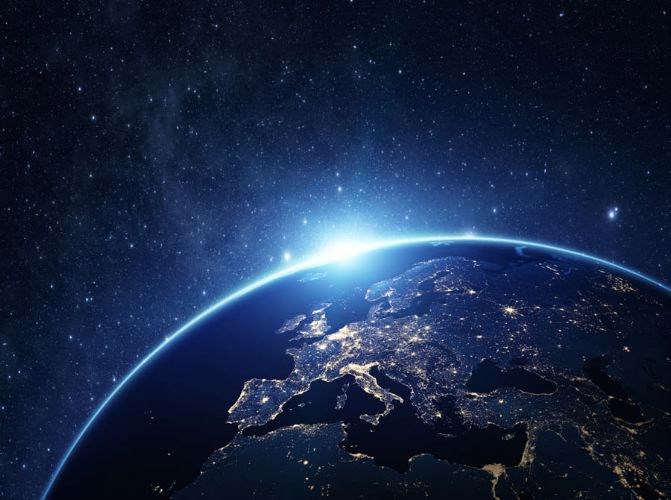Part two of two
Last week, we started a 45,400 kilometre trip using distance to measure deep time. Each centimetre represents year in the life of the planet, the trip takes us back 4.54 billion years to the formation of Earth.
Travelling around the planet, on our second pass, we arrived at the Ordovician mass extinction which wiped out 60 to 70 per cent of all species and close to 90 per cent of all life on the planet. But we still have 4,450 km to travel.
During the next 707 km of the trip - and after 150 km of barren landscape or the Silurian - life recovered. Vegetation rioted across the surface of the Earth and placoderms were the monarchs of the ocean. It was during the Devonian that shale gas was laid down allowing modern fracking and the consumption of truly fossilized carbon.
This 600 km or so has been called the Age of Fishes.
Global reefs were stocked with complex ecosystems of predator and prey. In order to escape, some of the intrepid fish tried the land.
Around 3,750 km from the end of our journey, we see Tiktaalik waddling across the landscape. Not the only fish to make the transition, but one of the first for which we have an extensive fossil record.
But a mere 10 kilometres further along, the first major deathblow of the Devonian is evident.
The episode qualifies as one of the worst mass extinctions, destroying 99 per cent of the world's largest reef, covering nearly eight million square kilometres of ocean.
The second major deathblow followed 150 km down the road and ended in glaciation. The top predators died along with much of the rest of life on this planet. The remains are the oil stored beneath the ground in Canada and Australia. If we were actually driving along this journey, this is where our fuel would come from.
It took life a long time to recover. The next 100 km are back to the barren landscape. Plants and other organisms slowly re-emerged, but this time life spread throughout the oceans and across a constantly changing landscape.
The next 1,190 km or so features a wonderland of strange creatures ranging from the distinctly unattractive lystrosaurus to the clam monocultures of claraia to menacing gorgonopsids with teeth longer than even T. Rex.
But 2,520 km from the end of our journey life on this planet almost came to a close. In a very short period, 99 per cent of the species and organism on the planet disappeared from the fossil record. The extinction saw carbon dioxide levels go wild and was likely tied to the eruption of the Siberian traps.
Again, for a couple of hundred kilometres the landscape is barren, but life will find a way and it blossoms once again. Giant shovel-headed amphibians bask on the banks of swampy floodplains.
Turtles arrive on the scene as do small flying pterosaurs. And our ancestors, the first members in the lineage leading to modern mammals, took their first steps.
Some 43,390 km into our trip, the break-up of Pangaea was well underway.
The stretching of the crust as the continents pulled apart resulted in magma flows.
These eruptions gave rise to the ridges and palisades seen on the eastern seaboard of North America and climatic conditions which would once again wipe out life.
But the Triassic mass extinction did open the way for the rise of the dinosaurs. For the next 1,350 km, all of the creatures of recent movie fame took centre stage - albeit not all at the same time.
After all, 135 million years is a very long time.
Then an asteroid struck the Earth. The massive fireball and subsequent earthquakes killed a large number of creatures, but the real killer was the eruption of the Deccan Traps in modern India.
Indeed, the impact of a celestial body and the consequent bursting of Earth's surface at the antipodes has been postulated as a driver for at least two of the other mass extinctions.
We are now a mere 660 km from the end of our trip, somewhere just east of Edson, Alta.
It would take the planet a while to recover, but once again it did.
Mammals became a dominant class of land animals, although there are still many more species of dinosaurs still around. We just call them birds.
As for us, our primitive ancestors appear about 50 km from the end. Homo sapiens would not appear in Africa until two kilometres from the end of our journey and wouldn't span out across the planet for another kilometre or so. As to modern civilization, it represents the last 120 metres of a journey 45,400 kilometres long.
We have barely arrived.
Yet, in geological terms, we have wiped out hundreds and thousands of species.
We are living in the sixth mass extinction but without the distance of time, we just can't see it.



